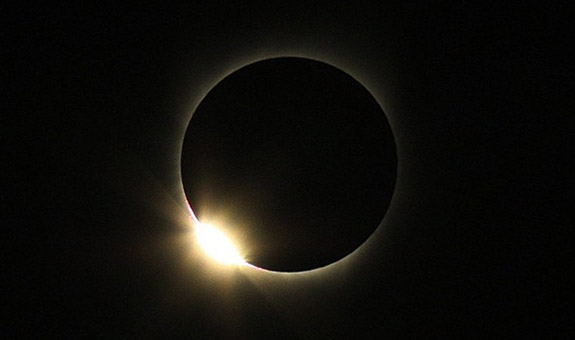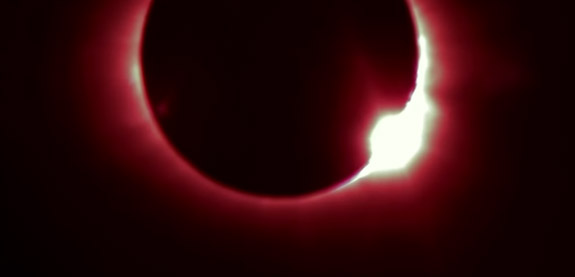Skygazers visiting the Faroe Islands to see a rare total solar eclipse on Friday got an added bonus when the perfect alignment of the Earth, Moon and Sun yielded a wondrous celestial display that looked remarkably like a diamond ring.

The Diamond Ring Effect, which was first explained by Francis Baily in 1836, occurs when the Moon completely masks out the Sun during a total solar eclipse. Due to the rugged lunar landscape, the black outline of the moon is not smooth. Tiny beads of sunlight can still shine through in some places and not in others as the moon slowly grazes past the sun.

These are called Baily’s Beads. When only one dazzling “bead” remains, momentarily, the view of the eclipse resembles a diamond ring. The ring’s glow is produced by the Sun’s corona remaining dimly visible around the lunar silhouette.

The Diamond Ring Effect actually happened twice on Friday. The first time occurred in the 8 o’clock position of the Sun in the moment just before the total eclipse, and the second occurred in the 4 o’clock position just after the total eclipse. The solar eclipse lasted for 2 minutes and 47 seconds.
To get the optimal view of the eclipse, observers had to travel to the remote Faroe Islands, which are located between Iceland and Norway. People living in Europe and North Africa saw a partial eclipse on Friday.
A total solar eclipse occurs when the Moon passes between the Earth and Sun, thereby completely hiding the Sun from viewers on the Earth. Because the apparent diameter of the Moon is larger than the Sun’s, it blocks all direct sunlight and makes daytime appear to be night.
The next solar eclipse is scheduled to take place over Indonesia in March 2016, according to NASA. The previous one took place over Australia in November 2012.
Total solar eclipses have occurred in the U.S. only two times in the past 40 years, in 1979 and 1991. The next one will happen in August 21, 2017, and will be visible from coast to coast. The maximum point of the eclipse will take place near Hopkinsville, Ky., at 6:22 p.m.
Check out the BBC video of Friday's total solar eclipse and dazzling Diamond Ring Effect, below.
Images: Screen captures via YouTube.com/BBC; NASA.
No comments:
Post a Comment